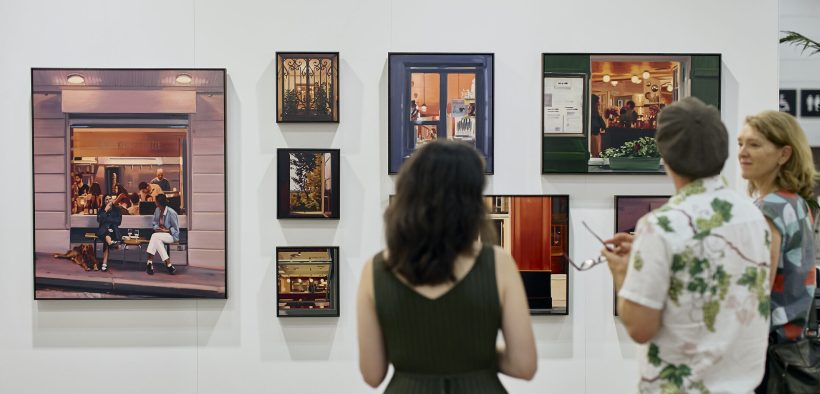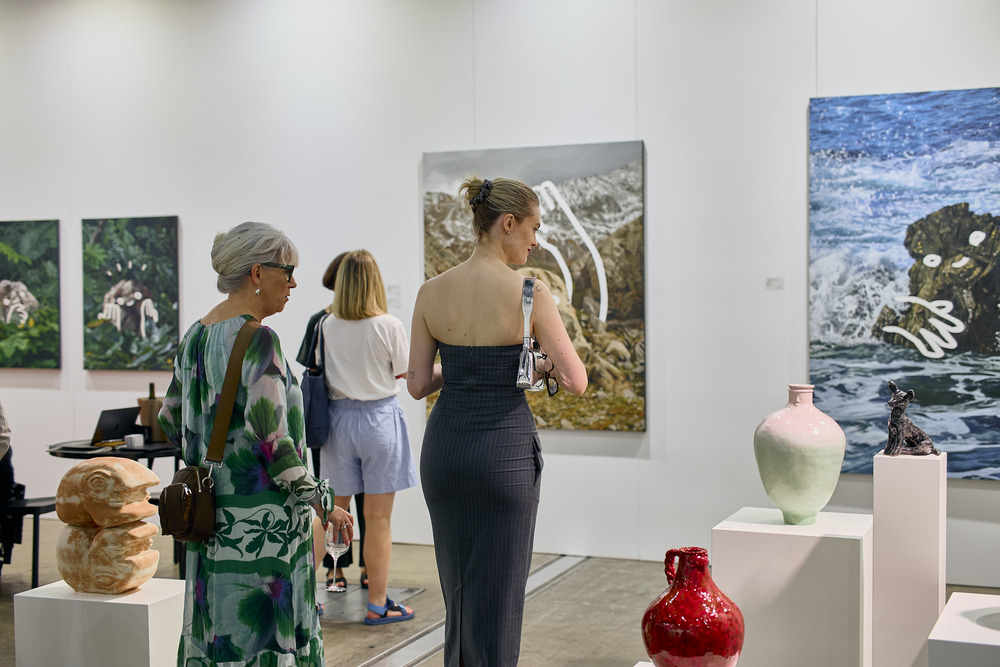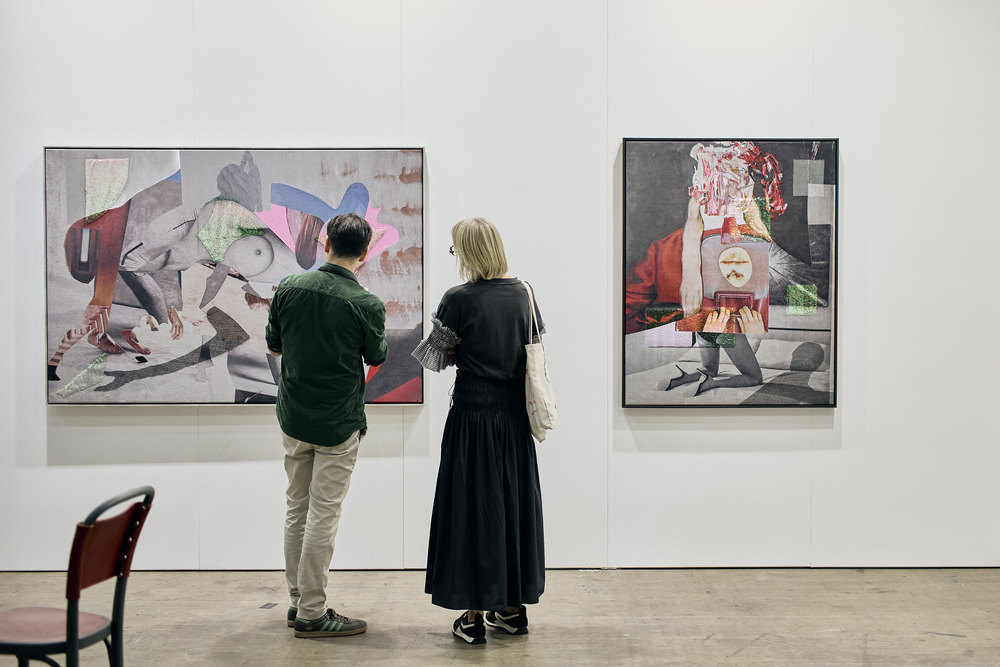Share

Melbourne Art Fair held pride of place at Melbourne Convention and Exhibition Centre in late February, as it returned for the first time since 2022. From the 22nd to the 25th, attendees could fall in love with the works presented by 60 leading galleries and Indigenous art centres.
Director of marketing and partnerships Erin Hodge described this edition of the long-running event, refreshed with flamboyant red-orange branding and expanded beyond the venue’s confines, as a “curatorially rigorous platform”.
“One that allows collectors and patrons to explore the region’s best contemporary art in one space, and gain a deep understanding of each artist’s practice,” she continued.
In a recent conversation with Marketing Mag, Hodge dove into the fair’s strategies for engaging its various stakeholders.
Marketing Mag: What makes the Melbourne Art Fair unique?
Erin Hodge: Melbourne Art Fair is owned and produced by the non-profit Melbourne Art Foundation. While the fair itself is a commercial event, with the primary objective to provide a platform for Australia’s leading galleries to exhibit and sell contemporary art, the foundation utilises profits to deliver an extensive commissioning and grants program, distinguishing it from conventional art fairs.
This allows us to complement gallery presentations with a dynamic and multifaceted artistic program – including large-scale installations, a dedicated cinema space showcasing international video art, the fully funded participation of four Indigenous art centres to showcase work by artists living on Country, a series of conversations with international speakers, major commissions, plus satellite events across the city. Since its establishment in 2003, the foundation has distributed more than $1 million in artist and curator fees through the Melbourne Art Fair. It is an incredibly unique model; in fact, it is the only art fair like this in the world.
MM: How do artists and galleries gain value from participating in such an event?
EH: Art fairs act as unique meeting points, in that they bring together a diverse, arts-interested audience under one roof. Over four days gallerists, artists, curators, institutions, collectors, journalists, and the art-loving public alike all gather to celebrate, learn about, promote, and support the arts.
From a commercial perspective, art fairs play an important role for galleries and their represented artists to drive sales. However, the value gained goes far beyond financial outcomes. Galleries and their artists gain critical promotion and exposure to a broad, arts-interested audience. Particularly for new artists and young art dealers that are integrated side by side with iconic names, it helps to establish their presence in the market. The event also provides vital opportunities to form new networks that lead to further commercial and curatorial opportunities post-fair.
Additionally, the context of a fair facilitates conversations between galleries and the next generation of collectors and arts industry professionals. There is a wonderful sense of comradery amongst the galleries and their artists, with the fair allowing them to connect and learn from each other.

MM: What work has been done to raise the fair’s profile in 2024?
EH: Melbourne Art Fair has a rich history as Australia’s most established fair, started by a group of galleries in 1988. Today, however, the fair has been re-envisioned as we move to an annual model. With a focus on solo presentations and works of scale and significance, we have been able to differentiate from other fairs in producing a curatorially rigorous platform – one that allows collectors and patrons to explore the region’s best contemporary art in one space, and gain a deep understanding of each artist’s practice.
Complementing gallery presentations, the 2024 curated program was the fair’s most ambitious to date, including a $100,000 bronze sculpture commissioned from artist Julie Rrap in partnership with Art Gallery of Western Australia, and a major performance commissioned from internationally renowned contemporary dance company, Lucy Guerin Inc.
Additionally, strategic collaborations with brands that align with the fair’s values have helped elevate its profile. Piper-Heidsieck Champagne, The Ritz-Carlton, Melbourne, VICE, Glenfiddich, Alpha60 and Broadsheet are some examples. These collaborations have allowed us to reach a diverse set of demographics, enhancing awareness and raising the fair’s overall profile.
MM: What digital strategies, including social media campaigns, virtual tours and online previews, were deployed this year to further engagement?
EH: A range of digital strategies were implemented to connect with our audience on various platforms – including social media campaigns, email marketing, influencer collaborations, online viewing rooms and content collaborations with digital media outlets – with a focus on creating accessible and resonant digital content for a broad audience.
We produced a series of artist profile videos, offering behind-the-scenes glimpses at artists developing works in their studios and also worked with fair ambassadors, spanning various creative fields, to conduct interviews and produce content with digital media outlets like Ocula and Broadsheet, focused on what they were most excited to see at the fair.
This approach played an important role in not only educating audiences on contemporary art, but also fostering engagement by allowing audiences to connect with an individual – making the art world feel more approachable.
Melbourne Art Fair also produces online viewing rooms, MAF Virtual, which runs alongside and for two weeks post-event. The online iteration increases accessibility for those unable to physically attend and provides a digital platform to connect galleries with a global network of collectors and art enthusiasts.

MM: How do you measure engagement, both online and in-person, and what strategies are in place to improve these metrics year on year?
EH: We look at a variety of metrics combined with anecdotal evidence to measure engagement both online and in-person. As a small non-profit organisation, social media is an important platform for us, where our audience regularly communicate. Beyond the views and likes, we pay particular attention to comments, shares and tags. Our audience often comments on posts of artworks they like, or tag friends to attend the event, which helps create a sense of community online. Email is another important platform for us. We utilise email marketing throughout the year, tailoring content and language tone for our VIPs and visitor audience, which allows us to maintain an average open rate of more than 45 percent.
In-person engagement is gauged through event attendance numbers and dwell time, offering a tangible understanding of the audience’s involvement. Additionally, attendee surveys and anecdotal evidence from galleries at the art fair and reporting on visitor interactions, adds a qualitative dimension.
MM: How will the fair build upon this year’s success in the run to 2025?
EH: Moving to an annual model allows Melbourne Art Fair to maintain momentum and a year-round presence in the market. We’re keen to work even closer with our galleries and corporate partners to activate mini events and co-produce content, engaging audiences throughout the year. This continuous engagement strategy aims to keep the event top of mind, ensuring sustained success leading up to 2025.
Next, check out the winner of JCDecaux’s Programmatic Campaign of the Year award.
Images credited to Melbourne Art Fair. Photography by Griffin Sim.














